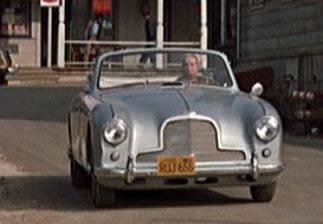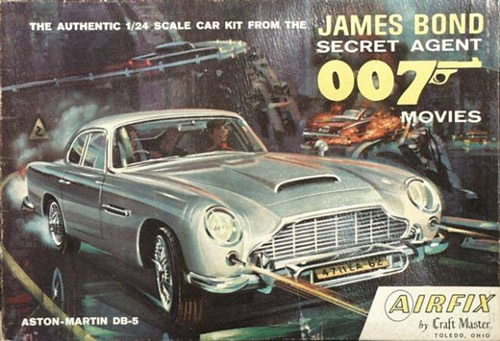Melanie's Coercion by the Birds
Melanie's Car: An Ode to James Bond

After Mitch attacks Melanie's freedom in the bird shop, Melanie strikes out to find him. After discovering that he visits Bodega Bay on the weekend, Melanie decides to venture up the coast in search of him in her Aston Martin DB 2/4. Hitchcock's choice of this car potrays a great deal about Melanie's gender coding. In the late 50's and early 60's an Aston Martin would have been a sign of tremendous wealth and prestige, just as they are today. The DB 2/4 was a car that only the wealthiest of men would have been able to afford. As a sign of masculine power and success, it is interesting that Melanie has somehow obtained an Aston. Camille Paglia notes that prior to the advent of the Ford Mustang in 1964, "it was primarily men who enjoyed the prerogative of the sports car (as in Martin Milner and George Maharis in the hit television series Route 66)."[2] The fact that the car is also a roadster, on top of being a sports car, only furthers the emphasis on Melanie's freedom. Melanie also exhibits superior driving skills, negotiating corners and shifting between gears as masterfully as a racecar driver. Although the scene lacks a soundtrack, the diegetic car noises serve to emphasize Melanie's adroitness with her vehicle, and mark her intrusion into a male dominated realm.
 [10]
[10]
By the time The Birds was being filmed, the first movie of the wildly successful and long-lived James Bond franchise, Dr. No (1962), had sensationalized the already popular series of novels by Ian Fleming. Although the first Aston Martin would not appear in a James Bond film until Goldfinger in 1964, Ian Fleming had already furbished his hero with a battleship grey Aston Mark III in the novelization of that same work in 1959. [3] The car greatly resembles that of Melanie's not only in color, but in styling as well. Melanie's Aston Martin is in fact the model that was produced the year before the Mark III. The parallel between Melanie and Bond is thus unavoidable. Since James Bond was rapidly becoming the ideal of masculinity, Melanie's connection with him enhances the masculinity associated with her character. The scene greatly resembles something that would appear in a Bond film, with Bond driving rapidly through pristine countryside to reach his target much as Melanie is driving up the coast to deliver the lovebirds. When the scene is commuted to include the Bond theme, written by Monty Norman, the scene's masculine coding becomes even more apparent. The blaring trumpets, which sound like a gun firing off rounds, the driving percussion, and the melody in the electric guitar, heavily associated with male rock 'n roll stars like Elvis by this time, all code the music as masculine. Before the scene looked familiar but now, with the Bond music to accompany it, it could just as easily be Sean Connery as Tippi Hedren driving the car.